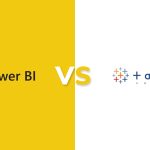Database types and combinations
Remember those records of student names in school, or of workers and payment lists. How about directories and biodata banks? These are all examples of databases.
A database is a ‘base of data’. A data bank so to speak. It is a collection of different pieces of information, of data and of records.
In computing, data is organized and stored logically in databases which are logically organized using management systems. These database management systems, also referred to as DBMS, are the computer architecture that analyse, sort and store data in easily retrievable packages that make their handling convenient.
We shall identify the different types of databases and highlight their characteristics.
In computer programming, data can be easily added or removed, updated or manipulated using database management systems.
Types of Database Management Systems
The nature of data to be worked with determines what database it constitutes. Just as you put eggs in crates and drinks in bottles. There are different types of database and we shall take a look at a couple of them.
- Hierarchical databases
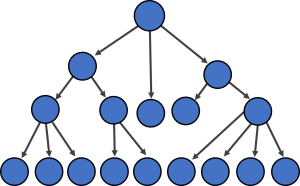
In the 1960s, IBM developed a this unique database model which is hierarchical in form. It contains information stored in the form with constituents begetting other constituents. Thus, relationship between components is determined on an above-below basis. A component above is called a parent while that below is the child. Thus, a parent can have multiple children, whereas, a child can only have one parent.
When locating information in this model, the parent is located and the children are revealed which contain the sort after data. In organization, the hierarchical database model is exemplified in the filing systems where one node (parent component eg year, department) leads to others (children eg months, staff).
The hierarchical database model is quite simplified in its form but is inflexible due to the limited options for inputting data. This, however, is profitable for use in the banking and telecommunications sectors. Two popular examples are the IBM Information Management System and Windows Registry.
[sf_button colour=”accent” type=”standard” size=”standard” link=”https://datasemantics.co/contact-us?utm_source=Blog&utm_medium=types_of_db” target=”_self” icon=”” dropshadow=”no” rounded=”no” extraclass=””]Contact Us to Know More[/sf_button]
- Network Databases
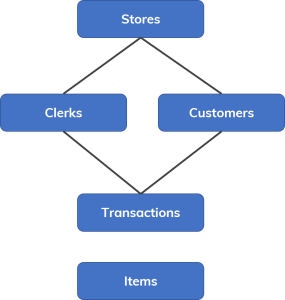
Network databases are related in a web-like form without strict criteria to their relationships. This database model was introduced by Charles Bachman. Unlike the parent-child single relationship model of hierarchical databases, network databases components can relate with multiple other components to infinity.
The interconnectivity used in network databases makes them the best bet for large computer architectures and information management systems. Information can move back and forth between components without strict directional protocol.
This kind of database is useful in institutions where data has to reach ‘all department from all departments.’
This model is advantageous in that information can be accessed easily from any node without recourse to the path it will follow. On the other hand, information can lose its value and placement for lack of identity.
Popular network databases include Integrated Data Store (IDS), Integrated Data Management System (IDMS), Raima Database Manager, TurboIMAGE and Univac DMS-1100.
- Relational Databases
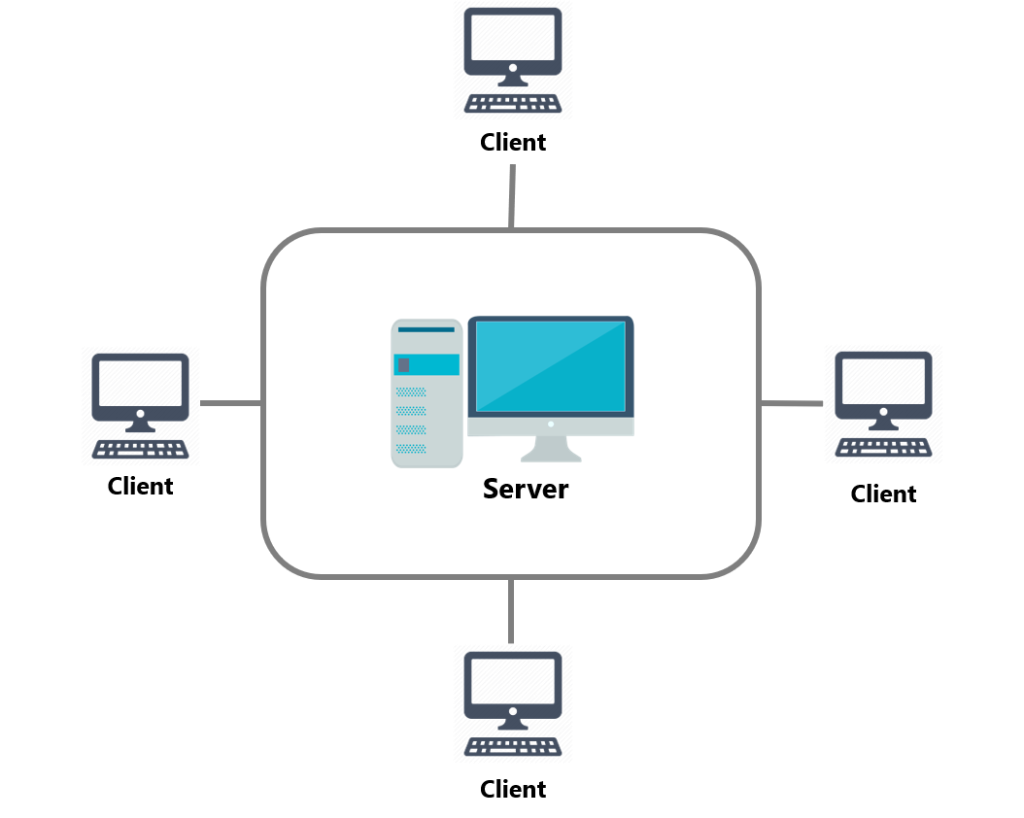
These are the most used databases in the world. They are very useful in interpreting information and are in themselves very easy to interpret. Relational databases are expressed as rows and columns in tables where the rows represent records and the columns represent attributes.
In this database model, the arrangement of each unit of data is related to those around it. The position of data is also useful in assisting enquirers properly interpret the status of the data.
Relational databases are quite simple to use thus allowing any level of users to manipulate.
The nodes in this database are also noted as values determined by the position they occupy.
For manipulating data appropriately in a relational database, the Structured Query Language (SQL) is used. The actions done include inserting, deleting and identifying data. These actions are referred to as queries.
Some popular relational databases include Oracle, SQL Server, MySQL, SQLite, and IBM DB2.
- Object-Oriented Database
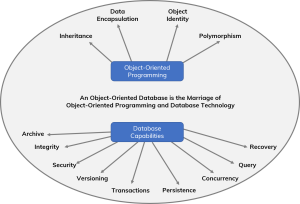
This database combination was created in the 1980s and is characterised with the storage of programming language tools alongside other forms of data. It operates on a database programming language and another native language and allows the full expression of both. Thus, the outcome is a full-fledged language and data architecture.
Object-oriented databases consist of units of objects which exist independently with a combination of data and software program. This is the unique feature of this database model. The data could be text or media while the software program contains the instruction for the data.
These databases allow data to run automatically without manual instructions as the software programs do the bidding. On the other hand, compiling this combination is very tasking.
Some Object-Oriented Program languages that are used in this database combination include Delphi, Ruby, C++, Java, and Python. Popular Object-oriented database systems include TORNADO, Gemstone, ObjectStore, GBase, VBase, InterSystems Cache, Versant Object Database, ODABA, ZODB, Poet. JADE, and Informix.
[sf_button colour=”accent” type=”standard” size=”standard” link=”https://datasemantics.co/contact-us?utm_source=Blog&utm_medium=types_of_db” target=”_self” icon=”” dropshadow=”no” rounded=”no” extraclass=””]Contact Us to Know More[/sf_button]
- Graph Databases

Graph Databases use graphs as their interpreted output. The data are independent nodes or edges that bear specific characteristics, notably quantities. The inter-connection of these quantities gives the output.
In an organizational system, a node could represent the given quantity of a specific character, maybe customers or products.
The graph database is another form of a relational database, except that in this case, the data is expressed as the quantity of the relationship given in the form of a node in the graph. They are like NoSQL databases using graphs as output.
Popular examples of graph databases include The Neo4j, Azure Cosmos DB, SAP HANA, Sparksee, Oracle Spatial and Graph, OrientDB, ArrangoDB, and MarkLogic. Relational database models also support the graph database structure. Examples are Oracle and SQL Server 2017 and later versions.
- ER Model Databases
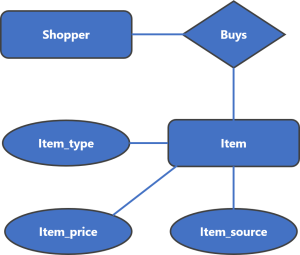
Entity-Relationship database model was developed by Peter Chen in 1976 and is a database form showing the relationship between entities. As shown earlier, in a relational database model, each row represents a record while the columns represent attributes. Drawing from the design of this template, the records are the entities whereas the columns remain the attributes.
The relationship is usually shown by storing an entity in another and tagging it as a foreign key with its own information contained in it.
[sf_button colour=”accent” type=”standard” size=”standard” link=”https://datasemantics.co/contact-us?utm_source=Blog&utm_medium=types_of_db” target=”_self” icon=”” dropshadow=”no” rounded=”no” extraclass=””]Contact Us to Know More[/sf_button]
- Document Databases
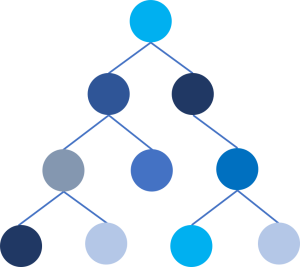
Document databases (Document DB) store data as documents. The documents contain data, attributes and relationships with other components. They are basically NoSQL databases that store data in form of documents.
Document DB are quite advantageous because of their NoSQL properties which enables the faster location of documents.
- NoSQL Databases
NoSQL databases are the databases that do not use SQL as their main data access language. As indicated earlier, network database, object database, graph database and document databases are common NoSQL databases examples.
NoSQL database do not have predefined schemas. This makes the effecting of changes quite easy exclusive without affecting the operations of other applications.
Some popular NoSQL databases are: CosmosDB, ArangoDB, Couchbase Server, CouchDB, Amazon DocumentDB, MongoDB, CouchBase, Elasticsearch, Informix, SAP HANA and Neo4j.
[sf_button colour=”accent” type=”standard” size=”standard” link=”https://datasemantics.co/contact-us?utm_source=Blog&utm_medium=types_of_db” target=”_self” icon=”” dropshadow=”no” rounded=”no” extraclass=””]Contact Us to Know More[/sf_button]


